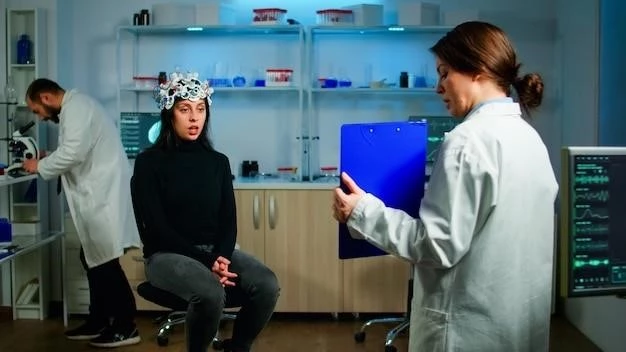Epilepsia Partialis Continua
Epilepsia Partialis Continua is a type of focal epilepsy characterized by continuous muscle movements. This article will delve into the basics of this neurological disorder, exploring its causes, symptoms, diagnosis, treatment options, and the role of brainwaves in the condition.
I. Introduction
Welcome to this comprehensive guide on Epilepsia Partialis Continua, a rare form of epilepsy that presents with continuous muscle movements. This neurological disorder can have a significant impact on an individual’s quality of life, requiring specialized care and treatment for management.
Throughout this article, we will explore the intricacies of Epilepsia Partialis Continua, shedding light on its causes, symptoms, diagnosis, treatment options, and the role of brainwaves in the manifestation of this condition. Understanding this disorder is crucial for both patients and healthcare providers in effectively addressing its challenges.

By delving into the details of this unique form of epilepsy, we aim to provide valuable insights into Epilepsia Partialis Continua, empowering individuals with knowledge about the condition and the available avenues for seeking medical support. Let’s embark on a journey to unravel the complexities of this disorder and discover the ways in which it can be managed and treated effectively.
II. Understanding the Basics of Epilepsia Partialis Continua
Epilepsia Partialis Continua is a form of epilepsy characterized by frequent and prolonged seizures originating from a specific area of the brain. These seizures lead to continuous, repetitive muscle movements, often affecting one part of the body. Unlike general seizures, which may involve loss of consciousness or convulsions, individuals with Epilepsia Partialis Continua typically remain fully aware during the episodes.
Individuals experiencing Epilepsia Partialis Continua may undergo various diagnostic tests to pinpoint the specific area of the brain responsible for the seizures. Imaging studies such as MRI or CT scans, as well as electroencephalograms (EEG) to monitor brain activity, can aid in the diagnosis of this condition.
It is essential to differentiate Epilepsia Partialis Continua from other forms of epilepsy due to its unique characteristics and continuous nature. Understanding the basics of this disorder, including its focal nature and distinct symptoms, is crucial for accurate diagnosis and appropriate treatment planning.
III. Causes of Epilepsia Partialis Continua
The exact cause of Epilepsia Partialis Continua is not always clear, but in some cases, it can be attributed to underlying neurological conditions or brain abnormalities. Structural lesions in the brain, such as tumors, infections, or strokes, may trigger the development of this condition.
Genetic factors can also play a role in certain individuals predisposed to epilepsy, including Epilepsia Partialis Continua. Mutations in specific genes related to brain function and neural signaling can increase the likelihood of experiencing seizures and continuous muscle movements.
Medical conditions that affect the brain’s electrical activity, such as head injuries or previous history of epilepsy, can heighten the risk of developing Epilepsia Partialis Continua. Understanding the underlying causes of this disorder is crucial for targeted treatment approaches and managing the condition effectively.
IV. Symptoms and Diagnosis
The hallmark symptom of Epilepsia Partialis Continua is the presence of continuous, focal muscle movements affecting a specific part of the body. These muscle contractions can persist for hours, days, or even weeks, presenting a significant challenge to individuals with this condition.
Other symptoms may include sensations preceding the muscle movements, such as tingling or numbness in the affected area. Despite the ongoing muscle activity, individuals with Epilepsia Partialis Continua typically retain full awareness and consciousness throughout the episodes.
Diagnosing Epilepsia Partialis Continua involves a comprehensive evaluation of the individual’s medical history, neurological examinations, and specialized tests like EEG to monitor brainwave patterns during seizures. Imaging studies, such as MRI or CT scans, can help identify any potential structural abnormalities in the brain contributing to the seizures.
V. Treatment Options
Managing Epilepsia Partialis Continua requires a multi-faceted approach aimed at controlling seizures, reducing muscle movements, and improving overall quality of life. Medications are often the first line of treatment, with antiepileptic drugs tailored to the individual’s specific needs and seizure patterns.
In cases where medications alone are not effective, alternative treatment options such as surgical intervention may be considered. Surgery to remove the area of the brain causing the seizures, known as resection, can be a viable option for some individuals with Epilepsia Partialis Continua.
Therapies such as vagus nerve stimulation (VNS) or responsive neurostimulation (RNS) may also be beneficial in managing seizures and muscle movements in individuals who do not respond well to medication or are not suitable candidates for surgery.
Complementary approaches like ketogenic diet or biofeedback techniques may offer additional support in managing the symptoms of Epilepsia Partialis Continua. Collaborating closely with a medical team specializing in epilepsy care is essential for creating a personalized treatment plan that addresses the unique needs of each individual.
VI. Continuous Muscle Movements in Epilepsia Partialis Continua
Epilepsia Partialis Continua is characterized by persistent, involuntary muscle contractions in a specific part of the body. These continuous muscle movements can vary in intensity and duration, ranging from subtle twitches to more pronounced jerking motions.
The repetitive nature of these muscle contractions distinguishes Epilepsia Partialis Continua from other forms of epilepsy, where seizures may be more sporadic or generalized. Individuals experiencing these continuous movements may find them disruptive to daily activities and may require additional support and accommodations.
Understanding the mechanisms behind continuous muscle movements in Epilepsia Partialis Continua is essential for developing targeted treatment strategies that aim to control these symptoms effectively. By addressing the underlying neurological causes contributing to the muscle activity, healthcare providers can work towards improving the quality of life for individuals living with this condition.
VII. Specialist Care for Epilepsia Partialis Continua
Individuals diagnosed with Epilepsia Partialis Continua often benefit from specialized care provided by healthcare professionals with expertise in the field of epilepsy. Neurologists, specifically epileptologists, are doctors who specialize in treating epilepsy and seizure disorders, including rare conditions like Epilepsia Partialis Continua.
These specialists conduct detailed evaluations, including EEG monitoring and imaging studies, to accurately diagnose and assess the severity of the condition. By collaborating with a multidisciplinary team that may include neurosurgeons, neuropsychologists, and specialized nurses, individuals with Epilepsia Partialis Continua can receive comprehensive care tailored to their unique needs.
Specialist care for Epilepsia Partialis Continua encompasses ongoing monitoring of seizure activity, adjustments to medication regimens, and exploring alternative treatment options when needed. Regular follow-up appointments with epileptologists help track the individual’s progress and make necessary modifications to the treatment plan for optimal seizure control and quality of life.
VIII. Understanding the Role of Brainwaves in Epilepsia Partialis Continua
The role of brainwaves is crucial in understanding the underlying mechanisms of Epilepsia Partialis Continua. Electroencephalograms (EEGs) are essential tools used to monitor the electrical activity of the brain during seizures, providing valuable insights into the patterns and abnormalities associated with this condition.
In individuals with Epilepsia Partialis Continua, EEG recordings may show distinct changes in brainwave patterns during episodes of continuous muscle movements. These abnormal electrical signals often originate from a specific area of the brain, known as the epileptogenic zone, which triggers and sustains the seizures characteristic of this disorder.
By analyzing the brainwave patterns observed on EEGs, healthcare providers can pinpoint the location of abnormal activity in the brain and tailor treatment approaches accordingly. Understanding the role of brainwaves in Epilepsia Partialis Continua is essential for optimizing seizure management strategies and improving outcomes for individuals living with this condition.
